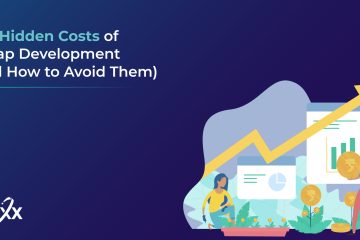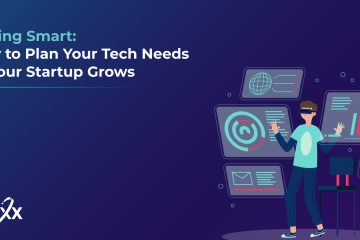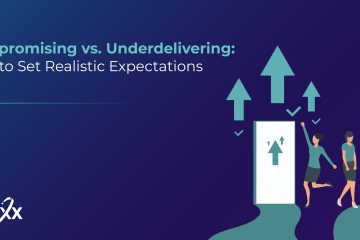In today’s digital world, business decisions are heavily reliant on the abundance of data, and that which is meaningful. Being able to access crucial data at the right time is important to guide sensible decision making. The advent of big data and the explosion of data sources provide organizations and data scientists with a wealth of information. However, extracting and making sense of the right kind of data still remains a challenge. It is here that data aggregation matters.
Data aggregation is a step between raw data and analysis. This process involves searching, gathering, and presenting data in a summarized, report-based format that is easy to understand and helps draw insights to achieve specific business objectives.
Importance of data aggregation to your business
You have probably heard the benefits of data analysis and data quality management. But there is often a very important process of data management that businesses overlook. Overlooking data aggregation can be detrimental to business growth. Data aggregation goes a long way to ensuring maximum utilization of business data.
This is how,
Data aggregation helps present useful data in making effective and efficient risk-based decisions in an organization. By aggregating risks across different spectrums, the business can efficiently monitor and respond to both external and internal catastrophes. This is a great risk management approach.
Another importance of data aggregation is the role it plays in reporting business Key Performance Indicators (KPIs). Using aggregate data minimizes the number of rows to be queried when obtaining the KPI values. This means less time to refresh KPI dashboards, reduced resource consumption, and minimal user wait time.
Data aggregation achieves all these by consolidating huge amounts of complex data into higher levels of dimension hierarchies, making it easier to manage information. All these are made possible when using the right data aggregation platform.
Why do you need a data aggregation platform?
Data aggregation can be futile and less effective for nothing if best practices are not employed along the way. Data aggregation platforms are built for this purpose.
These sets of components work together to search, collect, enrich, and clean data to help you make an accurate assessment of your business and strategies.
What goes into building a data aggregation platform
To solve the impact of data management challenges, companies are reimagining how data is handled. Data aggregation platforms have proved great benefits in solving recurring data challenges.
Building an effective data aggregation platform requires in-depth research and requirements gathering to make sure the final deliverable is custom-made, valid and verifiable like an expert puts it.
“A great product is the secret to long term growth hacking. You should get that right before you worry about anything else.” Sam Altman.
A data aggregation platform is this “great product”. The following paragraphs describe essential factors to consider when building a great data aggregation platform.
Factors to Consider When Building a Data Aggregation Platform
1.Ability to maintain data accuracy and provide an analytic approach
Solid, accurate, and reliable insights are the main drivers to data aggregation. Ensuring these involves ruling out issues such as adblocks and referral spams as early as when drawing the system design.
The analytic approach also plays an important role in determining the effectiveness of the data aggregation platform. A good approach is one that gives access to insights on individual users besides aggregated data. In this case, a great data aggregation platform is one that among other functionalities;
- Is customer-centered, in addition to basic functionalities like collecting and compiling data from multiple sources. The customer-centered platform gives the user the ability to monitor things that generate conversations and leads at customer’s levels.
- Includes the ability to deal with referral spams and adblocks. A platform’s workaround mechanism ensures that any occurrence of spams or adblocks will not interfere with business operations.
- Automatic data sampling and control. Besides automatic sampling, the platform should allow a user to control the level of sampling easily.
2.Integration capabilities and connectivity factors
A data aggregation platform is usually a part of a larger enterprise IT infrastructure. The design of the platform should create room for integration with other existing tools. A good integration design also makes it easier in case of change.
Building integration sockets enables the migration of applications and data in them easier while ensuring minimal disruptions to business operations. Integration describes a system that has the following capabilities.
- Existence of authorized integrations to make connections possible. This includes permission to adjust the code to make it work for your business in the absence of such authority.
- Ability to migrate data to other tools when the need arises. A great platform should not rely heavily on components or services that may create room for vendor lock-in.
3.Business requirements and features
The idea to build a data aggregation platform mostly stems from the inherent business requirements. Be it for increasing the profit, competitive advantage, or enhancing the operations within the enterprise, a data aggregation platform must capture a wide range of user and organizational requirements if it has to be usable and beneficial.
These features determine key functionalities of the platform including data tracking types plus reporting methods. The Key Performance Indicators should be included in the system as they are very critical to business growth.
This is the point,
An effective system should include your organization’s preferred tracking and reporting mechanism i.e. one that is easier to study, visualize, and understand and that addresses an organization’s policies. All these insights are presented and viewed in one place within the system.
The availability of the system features is also as important. A reliable system is one that provides features in real-time. This includes allowing the user to perform an advanced level of segmentation and access to user-level reports.
4.User-friendliness and device compatibility
While building a data aggregation platform, it is important to view it through a user’s lens. A platform that cuts on cost,gives insight,s and increases revenue is not enough. There exists another layer in business operations that plays a bigger role. That’s why every system should aim at making the user more comfortable while using the system.
This comfort is also determined by the device used to access the platform. Simply put, a PC is more comfortable than an early computer, a laptop than a PC, and currently, people are more inclined to mobile phones and tablets.
Have you heard about BYOD?
Well, this could be the future of working. It’s already a reality! You see, the more compatible your platform is with different devices, the more effective it is.
5.Platform building costs and overall cost-effectiveness
Another essential factor to consider while building a data aggregation platform is cost. It is important to know and appreciate the fact that implementing a data aggregation platform is a long-term commitment. This cost involves the ongoing and future operations cost.
Consider these costs while crafting the project plan. They include tools, upgrade, maintenance, and change management costs. Third-party services should also be captured while calculating the cost. The goal of this analysis is to come up with the most favorable budget.
6.Data organization and storage capabilities
Data is the basic unit of a data aggregation system. The tremendous data growth has seen organizations been choked by what is meant to be of benefit to them. These organizations fail to realize that data generation is a straight curve and data will always increase. They fail to appreciate the importance of data organization and storage and hence the data turns against them.
This situation will become even worse in days ahead for any organization that fails to design a modern data storage plan. In fact, according to Computer Sciences Corporation, 35 zettabytes of data will be in storage by 2020. This is a 4.4 times increase from 7.9 zettabytes stored in 2015.
With this massive growth, how and where businesses store their data has become more important than ever. The IT system must be able to scale with increasing data while maintaining consistent levels of performance.
Also, for any data-driven business, storing data is not just about how and where, but also the speed of accessing, retrieving, manipulating, and presenting the information. From there, it’s fair enough to conclude that data storage is a much live factor to consider while building a data aggregation platform.
Whether cloud or disk storage, you will be required to make important decisions as far as data is involved.
7.Advanced tools and technologies
Sometimes building complex systems requires very little effort than perceived. Mostly, this process involves a good knowledge of the best tool and technology and the other things will fall into place. Many times, the development of products such as a data aggregation platform take longer and incur more costs than planned.
In many cases, this was because enough time and resources were not allocated to researching and choosing the best, up-to-date tools and technologies. It has never been easy to choose a tool from hundreds of them. More so choosing a programming language from a pool of 700 existing languages. For a data aggregation platform, these tools include:
- Integrated debugging environment
- Build tools
- Tools to support methodology
- Source control tool
- Bug trackers
- Profilers
- Deployment tools
- Testing tools
Choosing each of these tools from a pool of them requires critical examination and testing while putting the following considerations in place.
Usefulness – How useful is the tool for the overall completion of the project.
Applicability of the tool – Different tools is applied in different environments. For example, a deployment tool cannot be used for testing.
Developer skills and experience – Almost every tool has a learning curve. The level of experience of the developer plays an important role in choosing the right tool and in the overall success of the project.
8.Scalability and flexibility
One of the major considerations to take stock of when building a data aggregator platform is how efficiently and dynamically it can scale up to future demands. By integrating it on the cloud, it can provide innovative and integral solutions within the big data environment. Easy integration and flexible data management are essential for handling the huge amounts of data generated in the context of digital communication, Internet of Things (IoT) and machine-to-machine communication.
9.Security and human factors
The human factor includes a wide range of factors that plays an important role in planning and building a data aggregation platform. A successful platform must address involved parties’ concerns.
The interplay among these human factors should also be addressed for a fully functional platform. The question to address in this respect includes;
Is the management ready for the data aggregation platform?
Management and stakeholders play an important role in determining the success of any project. The management should affirm their support before the team embarks on development.
Who are the users of the platform?
Guiding principles should be developed that define the roles, skills required and authority that every user has in the platform. This forms the basis upon which you build a clear and secure data aggregation platform.
10.Legal Factors
In most parts of the world, there exist certain bodies that control and govern the activities to ensure the well-being of everyone. Doing business in these places requires that your product, process, and people comply with local regulations. This means that everything that pertains to your business is under these regulations including systems.
It even becomes more sensitive when your activities involve the collection of data and user privacy protection. In legal compliance the tools used, procedures, team and the final deliverable must:
- Respect the rule of law, standards, and regulations of data privacy in your business jurisdiction.
- The product must be versatile to camouflage in the current and forthcoming legislation.
- Cookies and cache should be regulated and used with consent.
By now you’ve learned about quite a factors to consider while building a data aggregation platform. You’ve worked out the process, people, and technology factors of the process. You have a roadmap for the whole thing. You are ready to roll out the project. Take it slow, celebrate every milestone you achieve, and reap the success of the final deliverable.
It all comes down to this,
“Perfection (in design) is achieved not when there is nothing more to add, but rather when there is nothing more to take away”
–Antoine de Saint-Exupery
Ionixx Technologies has been consistently collaborating with several businesses in developing innovative digitization solutions and is well-equipped to provide suitable overall concepts within the context of unorganized data sectors. Want to build a data aggregator platform for your business? Then, schedule your appointment with us today!


